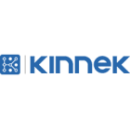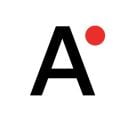
Hiring the first few employees when getting a startup off the ground is crucial. These initial team members will help set the tone for your company’s success, and ultimately determine the organization’s future.
We caught up with a number of successful startup founders to find out what they looked for in their first employees, and how that created the right company culture from the start.
Karthik Sridharan, co-founder and CEO at Kinnek

Built In: After launching the company, when did you know it was time to start hiring additional employees?
KS: We waited to start building out our team until after we raised our seed round of funding, which happened soon after we graduated from the Angelpad accelerator in December of 2012. Our reasoning was pretty straightforward- we needed funds in order to pay the salaries of employees.
Built In: What qualities did you look for in candidates when hiring your first employees?
KS: For the first several team members at Kinnek, my co-founder and I brought on people who were extremely passionate about building a company from the ground-up. There was no doubt that they were excited about our space, and they wanted to be a part of building an organization from scratch. We knew that our first employees would be our core inner circle, people that we would have to trust to make critical strategic decisions, and they would have to go through all the trials and tribulations of startup life along with us. For that reason, we filtered out people who didn't absolutely want to join us and were palpably excited about the opportunity (despite the risks).
A startup's earliest hires tend to be the people who set the tone of the company's culture in the long-run, so this was also a big consideration for us when interviewing candidates. Additionally, we prevented ourselves from focusing on candidates with very specific skillsets, because we knew that as an early-stage startup we could experience many minor (or major) pivots over our first few years.
Built In: What is a key lesson you learned after hiring your first several employees?
KS: It's important to recognize the hiring needs of a startup vary tremendously according to what lifecycle stage the company is in. I think the biggest mindset shift for us after hiring our first several employees, was that we had to change the types of qualities and experience we looked for to be more granular, more specific. As we grew to 15, 20 employees and beyond, it was no longer possible for us to simply hire 'all-rounders' and 'generalists;' we needed experts in marketing, sales, account management, customer success, etc.
Built In: How many employees does your company have now?
KS: We've just crossed 50 team members, all working together to serve small businesses and be their champion; it's pretty incredible to see so many smart, amazing people working together on something that Rui (my co-founder) and I came up with in a coffee shop. It's absolutely the coolest thing about being at Kinnek for me. As we've grown the team, we've had the opportunity to bring more people onto the team with varied skillsets and expertise, and that's made Kinnek an even more awesome place to work.
Brian Selander, Executive Vice President at Whistle Sports

Built In: After launching the company, when did you know it was time to start hiring additional employees?
Brian Selander: Our founder John West started bringing on new people fairly quickly after the 'aha' moment years ago that a sports network for millennials was a market opening that could not be denied.
Built In: What qualities did you look for in candidates when hiring your first employees?
BS: Startup employees need to be flexible, able to handle uncertainty and willing to pitch in wherever and however is needed. That means they need to be creative, able to focus deeply and very smart so they can learn quickly.
Built In: What is a key lesson you learned after hiring your first several employees?
BS: If you are focused enough on maximizing people's strengths and creating roles that let them use them, then their weaknesses become less relevant because they're covered by others.
Built In: How many employees does your company have now?
BS: Over 100.
Harley Courts, CEO and Founder of Nooklyn
 Built In: After launching the company, when did you know it was time to start hiring additional employees?
Built In: After launching the company, when did you know it was time to start hiring additional employees?
Harley Courts: After launching Nooklyn I knew it was time to hire someone when I could no longer take every meeting in a day and manage all of our new customers, finances, and schedule. Nooklyn had scrappy beginnings focused on creating revenue and demand before adding any major expenses. Our first hire was Alexandria Lust — she became our office manager and effectively the company controller, and without her I don't know where Nooklyn would be today. We have since promoted her to a listing manager and she still plays an equally important and influential roll at Nooklyn.
Built In: What qualities did you look for in candidates when hiring your first employees?
HC: We looked for candidates with strong leadership abilities that also complimented our weaknesses. We looked for people who seemed interested in our vision to fix the experience of finding apartments and loved working with people.
Built In: What is a key lesson you learned after hiring your first several employees?
HC: A key lesson learned was giving away some control. I hired Moiz Malik, now our third partner and CTO, as a freelancer. Without giving away some control to both Moiz and Alexandria my vision would still be a vision. Another key lesson learned is to never over promise even with good intentions and don't let negativity spread. Waiting too long to reposition or let someone negative go can affect the performance of your entire team.
Built In: How many employees does your company have now?
HC: 20 employees and over 140 independent contractors.
Marcela Sapone and Jessica Beck , co-founders at Hello Alfred

Built In: After launching the company, when did you know it was time to start hiring additional employees?
Hello Alfred: After we won TechCrunch Disrupt in 2014 we had 3,000 new client signups in a matter of hours. After that, it was clear that we needed to hire a high-performance team to help build out our platform.
Built In: What qualities did you look for in candidates when hiring your first employees?
Hello Alfred: There were three things we initially looked for in potential candidates. First, they needed to be book smart and street smart. We looked for people who could solve complex problems — who saw not just the high-level strategy, but also the importance in knowing how to fix the nitty gritty issues like solving customer problems that come up when you’re working in the real world.
Second, we looked for candidates who had great people skills. We’re in the business of helping people through technology, but our platform is powered by real people. That means our employees should be able to relate to people from all walks of life and with all kinds of needs to help them live more errand-free. Finally, we wanted people who were both looking to change the world and were willing to put in the work. We have a big goal of changing how people live their lives and interact with technology in their homes, so we wanted people who believed in that, too—and who were willing to roll up their sleeves to help us achieve it.
Built In: What is a key lesson you learned after hiring your first several employees?
Hello Alfred: Hire smart people who can do everything/anything, then allow them to focus where their strengths are. In our early days, we hired a lot of talented people to help us grow. We found that everyone has strengths and if you cultivate them, they begin to specialize and become more successful and invested later stage employees. As a startup, there is a lot of opportunity to grow and have substantial exposure to executives and the founding team.
For engineers specifically, we learned to focus on the problems we are trying to solve—not on the product we’re looking to build. The more complex and juicy the problem, the more excited and creative our engineers would become. If we had just told the team what we wanted to build, we wouldn’t have gotten as much energy and creativity.
Built In: How many employees does your company have now?
We currently have 25 employees between NYC (HQ), Boston and SF and we’re hiring across multiple roles.
Alex Rappaport, co-founder and CEO of Flocabulary

Built In: After launching the company, when did you know it was time to start hiring additional employees?
AR: For the first four years it was just the two of us – co-Founder Blake Harrison and I – and we wore all the hats. Despite not really having any idea what we were doing, we had the good sense to delineate our roles. He was in charge of building the product and I was in charge of selling it. Our first hire came when I could no longer handle the sales volume or support the customers once we had them on board. So we hired a head of sales. That hire allowed me to focus on marketing, business development and overall company strategy. And that first hire stayed with us for 5 years.
Built In: What qualities did you look for in candidates when hiring your first employees?
AR: Generally speaking, we prized character traits over hard skills. First and foremost we looked for adaptability because responsibilities and expectations were constantly in flux. We didn't want someone who took a job description literally. We also looked for candidates who had an insatiable drive and could out-hustle anyone. So much of success in the early stage is dedication, tenacity and the sheer will to make it work. That means doing unglamorous work and not waiting around to get credit for it. Lastly, we looked for people who showed humility and empathy, and this is still a guiding value of our business today.
Built In: What is a key lesson you learned after hiring your first several employees?
AR: While hustle and drive are great, skills matter too. As the company grew and new demands took shape, we began to specialize roles - an art director, a UI developer. I remember the moment when the team shifted from a room full of smart, driven generalists to a group that included equally smart and driven specialists that could build out and lead their own functional areas.
Built In: How many employees does your company have now?
AR: 50.












